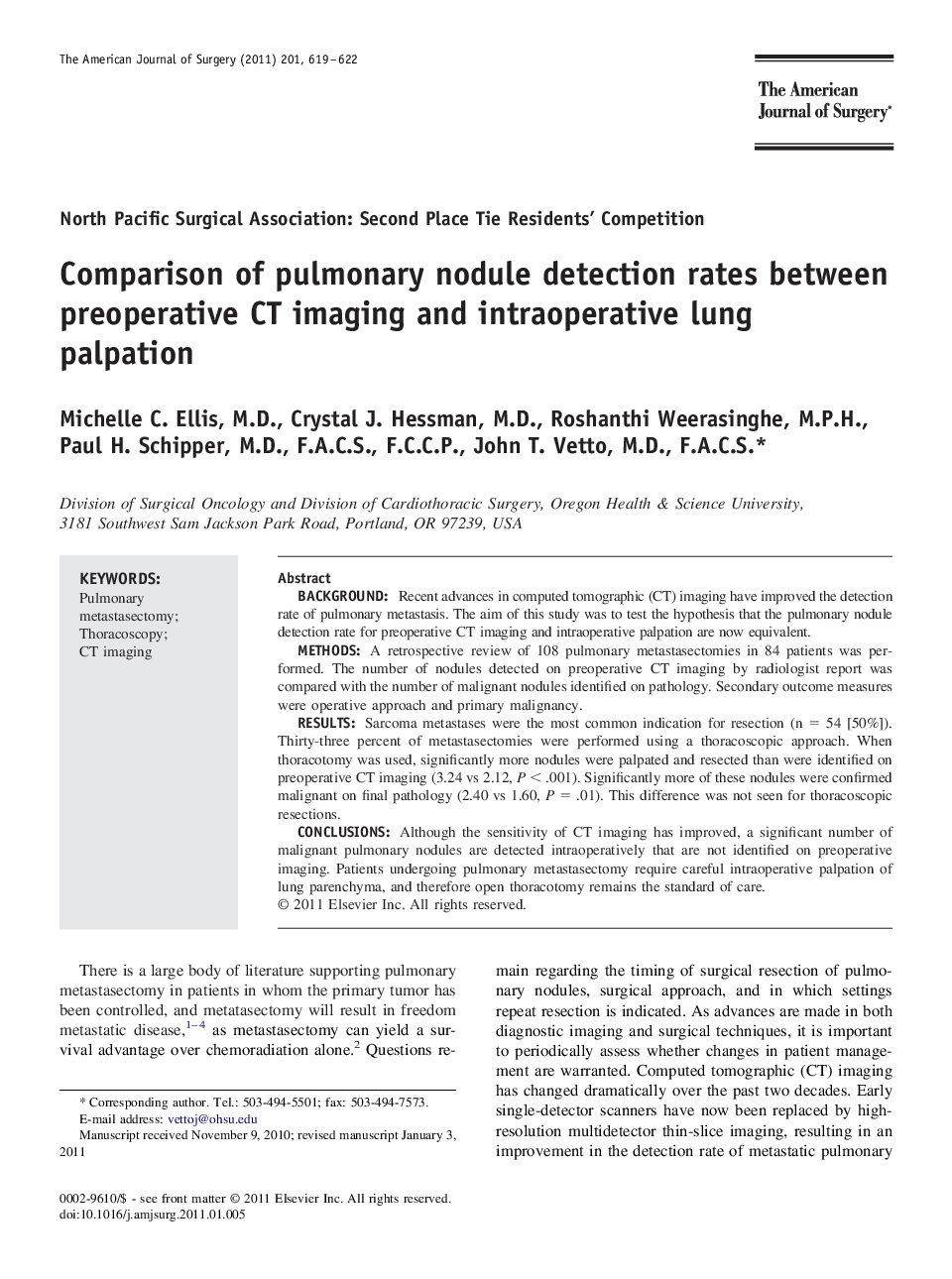| Article ID | Journal | Published Year | Pages | File Type |
|---|---|---|---|---|
| 4280084 | The American Journal of Surgery | 2011 | 4 Pages |
BackgroundRecent advances in computed tomographic (CT) imaging have improved the detection rate of pulmonary metastasis. The aim of this study was to test the hypothesis that the pulmonary nodule detection rate for preoperative CT imaging and intraoperative palpation are now equivalent.MethodsA retrospective review of 108 pulmonary metastasectomies in 84 patients was performed. The number of nodules detected on preoperative CT imaging by radiologist report was compared with the number of malignant nodules identified on pathology. Secondary outcome measures were operative approach and primary malignancy.ResultsSarcoma metastases were the most common indication for resection (n = 54 [50%]). Thirty-three percent of metastasectomies were performed using a thoracoscopic approach. When thoracotomy was used, significantly more nodules were palpated and resected than were identified on preoperative CT imaging (3.24 vs 2.12, P < .001). Significantly more of these nodules were confirmed malignant on final pathology (2.40 vs 1.60, P = .01). This difference was not seen for thoracoscopic resections.ConclusionsAlthough the sensitivity of CT imaging has improved, a significant number of malignant pulmonary nodules are detected intraoperatively that are not identified on preoperative imaging. Patients undergoing pulmonary metastasectomy require careful intraoperative palpation of lung parenchyma, and therefore open thoracotomy remains the standard of care.
